The Gift of South Dakota
Subscriptions to South Dakota Magazine make great gifts!
Subscribe today — 1 year (6 issues) is just $29!
The Last Nurseryman
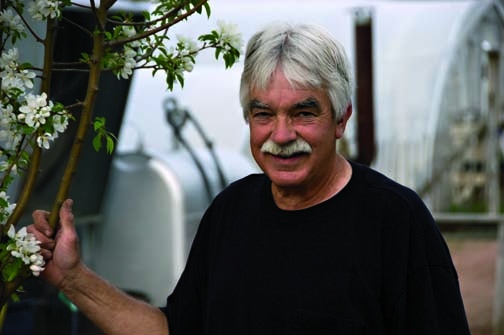 |
| Working for the corporate nursery that bore his name became intolerable so Jay Gurney (above) and his father repeated the family tradition of starting their own operation. |
One of the saddest days of Jay Gurney’s life came in 1977 when his father lost his job at what had been the family nursery. “I helped my father gather up his stuff,” he remembers.
By the early 1940s the Gurney family no longer owned the historic family business in Yankton. The company changed owners several times and was eventually bought by American Garden Products. “Shortly after my grandfather’s death, the company said to my father Sidney: ‘We’ll offer you $100 to continue using your name and likeness in our mail order catalog. If you don’t sign the agreement, you’re fired.’”
When Sidney was terminated, he had worked as vice president and in other positions for 45 years, except during his World War II military service. Jay was also working for the company that bore his family name when his father was told to leave.
“I was about 26 years old and ran their greenhouse. I could see there wasn’t much future there for me if they fired my father,” Jay says.
A few days later, Jay and Sidney purchased 10 acres of land at the edge of Yankton and started the Sid & Jay Gurney Greenhouse just a block away from the corporate Gurney’s.
The officials made two mistakes. The first was when they threatened Jay. “As I gathered up my things I was told I’d never work in the business again anywhere and if I started my own business with Gurney in the name, they would sue me. I said, ‘Well, we’ll see.’ That’s what spurred me on during those hard startup years.”
In fact, the corporate lawyers did eventually sue the father and son for using their own last name in the new business. It was decided out of court that the Gurneys could use their name as long as they added a tag line that they were not affiliated with Gurney Seed & Nursery Inc.
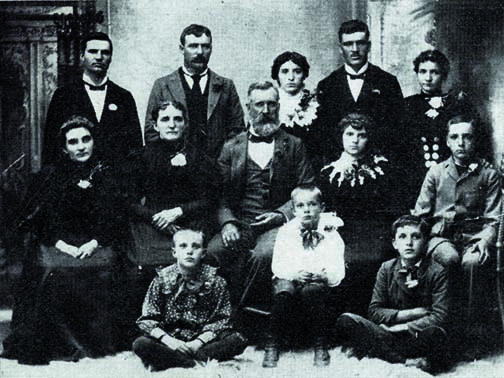 |
|
C.W. Gurney, the patriarch of the nursery family (pictured center), started his first operation in Iowa after the Civil War. He also operated in Nebraska before arriving in Yankton in 1898, where he eventually incorporated the business with seven sons and a nephew. |
Jay’s great-grandfather, C.W. Gurney, faced hard times, too, when he founded Hesperian Nurseries in 1869 along a homesteading trail 60 miles southeast of Yankton. Homesteaders needed trees for proof of settlement and for shade, fruit, windbreak and as reminders of home.
Hesperian Nurseries operated differently than modern-day nurseries. The Gurneys didn’t collect payment until a year after planting, and only charged for trees that were still thriving. C.W. Gurney’s planting and tree care techniques kept his nursery business solvent with the two-season guarantee. He and his sons established a branch of his business called Yankton Nursery in 1898. Later it was known as House of Gurney and it became Gurney Seed and Nursery Company in 1941.
Jay’s grandfather, George Walter Gurney, was a nurseryman in Yankton his whole life. “Gramps knew what to do with nursery stock and when to do it. I grew up in the nursery world. By the time I was 13, I could shear a hedge, prune a tree and maintain a garden. I learned to wear gloves when working with barberry bushes.
“Gramps was forever hoeing his large garden. His lawn was dandelion-free. I learned the most from Gramps, first tending his yard, and later in the fields.”
Jay remembers his grandfather’s nursery rules. “‘When you use a shovel, you clean it right away,’ my grandfather would say.” George also wanted sharp gardening tools. “He’d say, ‘Rough cut plants don’t heal well.’”
Sidney was in poor health as he and Jay started their new venture, but the father-son duo had a lot going for them. The Missouri River bottomland nourished their plants and they had plenty of space for greenhouses, a retail store, and a home right on the property. Eventually, they moved the retail store to the farm, which sits along Ferdig Avenue on the east edge of Yankton.
“While it was a drawback to have a major nursery in the same town, we knew their company well,” Jay recalls. “They offered catalog sales and bare root plants. By the early 1980s many people wanted container plants that were available locally and were ready to plant when they wanted. We offered potted plants and grew bedding plants that the mail order company didn’t have.”
Sales were slow those first years. “You can have the right ideas, but they don’t always work out perfectly,” Jay says. “You have to commit yourself. Hail, blizzards, and summer storms knock buildings down. You can’t look back. Just fix them and keep going.”
Sidney died just three years after starting the new nursery, but Jay gained family support from his mother, Jane, his wife, Tracy, and mother-in-law Lucy Holdorf.
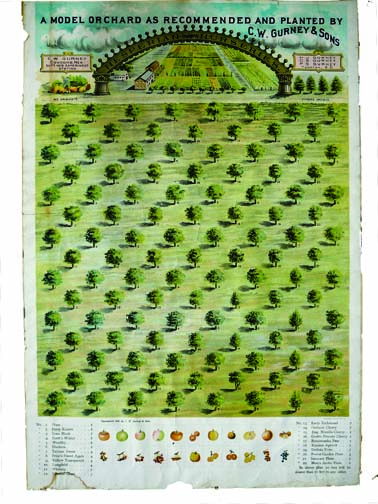 |
|
An 1893 Gurneys poster illustrated how homesteaders might organize an orchard. |
“They transplant in the greenhouse and work in the store and fields. They are the reason we made it through the tough years,” he says.
Most full-service nurseries locate near larger population centers for obvious reasons. But the Gurneys have plenty of competition from national chains that import plants and flowers by the truckload.
“The box store signs say ‘Visit our nursery.’ But nothing is grown from a seedling or produced there,” Jay says. “We have a selection of plants and supplies on hand for the customer. We process bare root trees into container plants, grow plants in our fields, do tree spading, have a landscape service and a retail store.”
Plus the local greenhouse is staffed with people who love plants. “Gardeners usually don’t bring wilted leaves and insects to identify to the big box store like they do here,” Jay says. “And when those stores feature plants in early spring, sometimes you need to say that the ground isn’t warm enough for planting here yet. You may lose the sale because no one wants to be told ‘no.’ They don’t tell you ‘no’ in the big box store. To me it’s the right sale if it’s the right plant for the right place at the right time. Great-grandfather Gurney warned homesteaders about fly-by-night nurserymen. Earning customer trust is the best guarantee for business success.”
Today, the former corporate Gurney headquarters sit vacant on Second Street. Town leaders are hoping something positive will happen with the property, which sits between the downtown area and the Missouri River. A Gurney Seed & Nursery catalog is still published, but it comes from somewhere in Indiana. It no longer mentions Yankton or features pictures of the Gurney family members.
Jay says the company was good for the Yankton community for decades, and he’s glad that it still elicits fond memories for people. But when you’re continuing a fourth-generation occupation, it’s hard to find time for philosophizing any further than that. “After all that has happened,” he says, “we moved on.”
Editor’s Note: This story was revised from the July/August 2009 issue of South Dakota Magazine. To order a copy or to subscribe, call 800-456-5117.
Jay Gurney’s Growing Tips
Visit your local nursery several times over the season to peruse peak blooming varieties and create a colorful yard from spring until fall.
Don’t be in a hurry to plant in early spring. What blooms in the greenhouse early may not perform well in hot weather. Jay’s grandfather used to say, ‘Once the tulip leaves turn brown, it’s time to put the bedding plants in.’ This accounts for changeable weather each year.
Let purchased plants adapt to local conditions before planting so they won’t go into transfer shock and not grow well. Or consider the local nursery that does this for you.
Customers often ask Jay when to prune plants. His rule of thumb is that you can always prune when you have your clippers in hand.
Customers also want to know when it becomes too late to plant. As long as the ground isn’t frozen, you can plant. In general, bare root trees and shrubs grow better when you plant them in the spring. Container plants can be planted anytime the ground isn’t frozen.


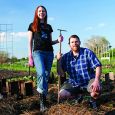
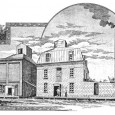

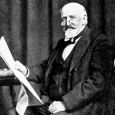

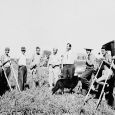


Comments
Judy Goh
Is the book you have titled "House of Gurney 60th Anniversary Cookbook"?
Amazon says 1890:
http://www.amazon.com/House-Gurney-Anniversary-Cookbook-Satisfy/dp/B002ROWC1C/ref=sr_1_8?ie=UTF8&qid=1334062627&sr=8-8
Worldcat says 1926:
http://www.worldcat.org/title/house-of-gurney-cook-book-60th-anniversary/oclc/42404607&referer=brief_results
Charles W. Gurney founded Hesperian Nurseries in 1866, so 1926 would be a more reasonable date.
The number for Jay Gurney at Yankton Nurseries is 655-3500.